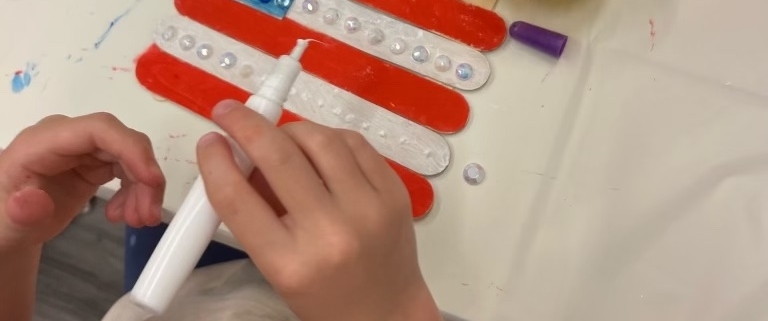Helping Kids Navigate Post-Election Anxiety
Election seasons often bring strong emotions—and, for kids, witnessing adults debate or seeing polarizing headlines can lead to confusion, fear, or anxiety. Whether they’re overhearing snippets of conversation or the news, children may struggle to understand these complex events.
Here’s how you can help the young people in your life process election-related stress, encourage open-minded conversations, and find constructive ways to engage with democracy.
1. Address Feelings and Talk Openly
Children may feel uncertain or anxious when they sense tension around them, especially about big topics like elections. Encourage them to talk openly about their feelings, whether they’re worried, confused, or just curious.
Ask questions to understand their concerns. You might say, “I noticed you seemed quiet when we talked about the election. Are you feeling worried or curious about something?” Once they’ve had a chance to talk, reassure them that it’s okay to have a range of emotions. You might say, “Big events like elections can feel intense for everyone, even adults.” Validating these feelings can go a long way toward reducing stress and helping them feel secure.
You might even reiterate:
- “No matter what happens in the election, our family is here for each other, and we’ll make sure you’re safe and supported.”
- “There are people working hard to make things better for everyone, and you can always come to me with any questions you have.”
Explain that debates and discussions are normal, even when adults feel strongly. You might explain, “Even when we don’t agree, it’s best to talk in a way that’s friendly and understanding.” Or if your child questions something you’ve said, you might encourage reflection by explaining, “I said that because it’s how I feel, but I know other people have different views, and it’s okay to talk about these things calmly.”
Framing discourse and voting as parts of the democratic process can help demystify the situation, making it less intimidating for kids.
2. Teach Empathy and Open-Mindedness
Give your kids tools to interact with peers who may have different perspectives. Model open-mindedness by listening with empathy and respect when someone else is speaking, and encourage your child to listen to do the same. You might remind your child, “It’s good to hear what others think, too—everybody can teach us something new.”
If a child repeats something you’ve said about a candidate or issue, it’s a great opportunity to guide them on thinking critically and speaking thoughtfully. Kids may not fully understand the context behind what they’ve repeated. Gently explain that people have different views on issues and candidates because of their experiences, values, and beliefs. Reinforce that it’s normal and healthy for people to see things differently.
For younger kids, role-playing with toy figurines, puppets, or acting can be a fun way to practice empathy. For instance, pretend two puppets are talking about a school election. One puppet might say, “I think Amy would make the best class president because she’s really kind!” while the other might respond, “I think Ben would be great because he’s good at organizing things.” Then, help your child take the role of a third puppet or toy and ask, “What do you like about each of them?” This can help your child see the positive qualities in both choices and practice listening to different points of view.
Or you might Act out a situation where one puppet says, “I heard my family say that [candidate] is the best, so that’s who I think is best too!” and another puppet responds, “My family supports someone else, so I think they’re best.” Encourage your child to practice responding kindly, like, “We both have reasons for our choices, and that’s okay. We don’t have to think the same to be friends.” This can help kids understand that respecting others’ opinions doesn’t mean they have to agree with them.
3. Encourage Expression and Curiosity
Validate your child speaking up by saying something like, “Thank you for telling me how you feel. It’s okay to feel nervous, excited, or even a little scared. Those are all normal reactions. I understand why you’d feel this way; it’s a lot to think about.”
If they’re curious, visit your local library to explore age-appropriate resources on how the government works and what voting entails. To channel their feelings positively, give kids space to express themselves creatively. Younger children might enjoy drawing or writing about what a future they care about looks like. Older kids could write letters to a local representative or create a “future goals” poster. These activities help kids feel like they have a voice, empowering them within the democratic process.
4. Create a Calm and Balanced Environment
Limit exposure to negative news cycles and political ads, as constant updates can be overwhelming. Instead, curate the information they receive, focusing on positive stories or instances of cooperation in politics. Remind them that while elections are important, it’s also okay to take breaks and focus on other activities that bring joy, like spending time with family or engaging in hobbies.
5. Reinforce Kindness and Patience
Remind kids, “It’s okay to agree to disagree, and kindness can go a long way, even in tough conversations.” Talk about how patience and understanding can help everyone feel more connected, even if they hold different views.
Elections are not only pivotal moments in US history—but important opportunities to foster important skills within our households, helping our children become thoughtful, resilient, and engaged young citizens who are prepared to navigate the complexities of democracy with empathy and confidence.
If you’re in New York’s East End, sign up for Shine classes, workshops, or parties. We create an inspiring environment where inclusion, cultural diversity, kindness, and creativity is promoted.



